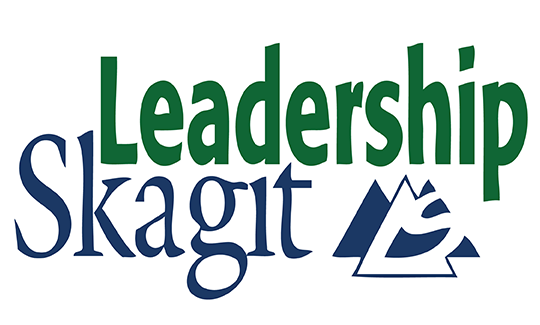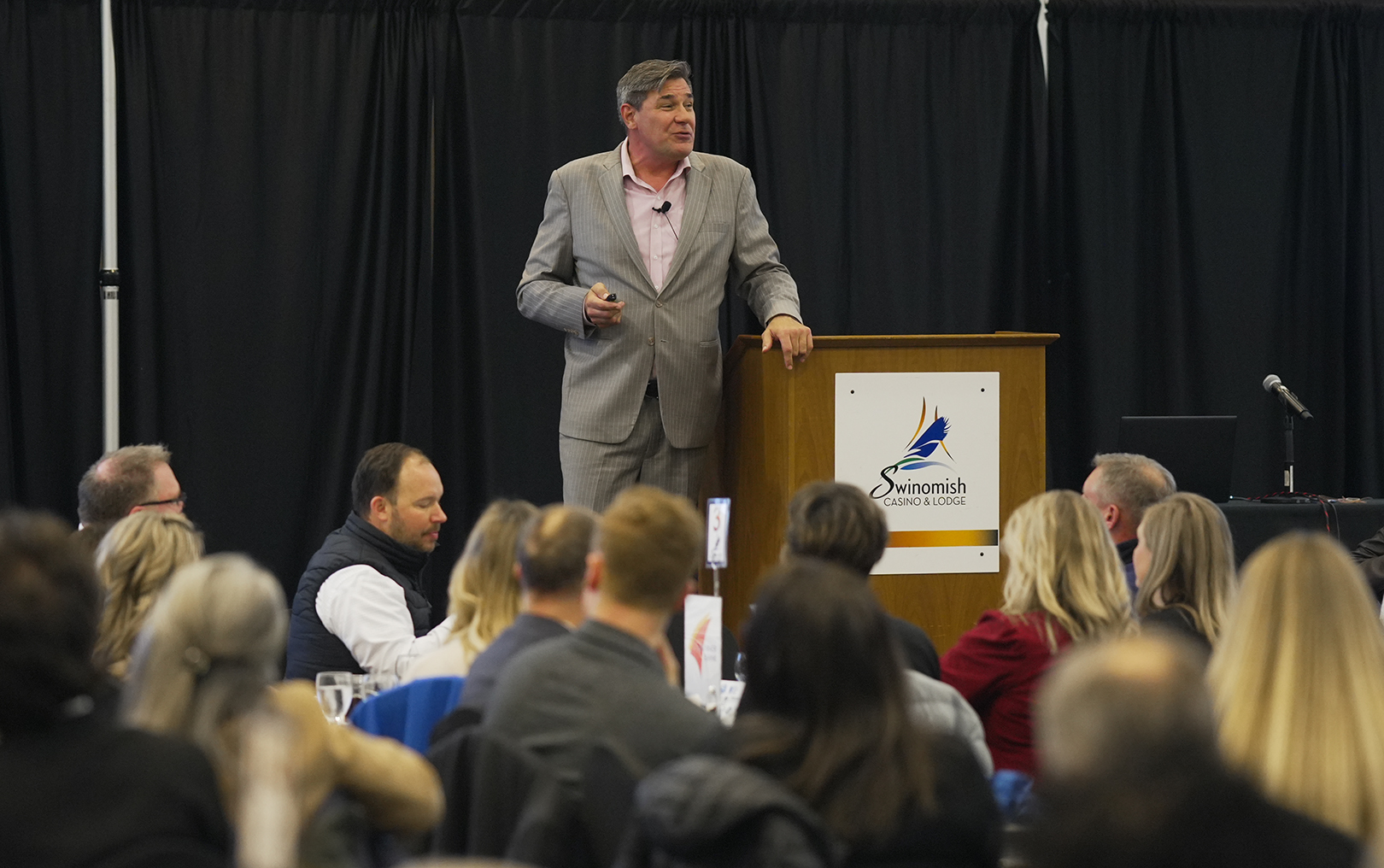Tourism’s place in the economic development landscape of Skagit County

24 Mar 2025
News
Driving north on Interstate 5, cresting the hill at Starbird Road, the vista of Skagit County unfolds – the vast agricultural lands straight ahead, Mount Erie and the waters of Anacortes to the west, the evergreen hills that serve as the gateway to the Cascade National Forest to the east, all illuminated in a sublime light made famous by the Northwest School painters.
These regions in the county each offer their own distinct beauty, attractions and amenities, catering to the 2.14 million overnight visitors who traveled to Skagit County in 2023. The fledgling Skagit Tourism Bureau is aiming to capitalize on what locals call “Magic Skagit,” helping to build a savvy and sustainable tourism industry.
“Industry” is the key word when thinking about tourism from an economic development perspective. Tourism can mean big business to communities of all sizes – think of the numerous businesses throughout Skagit County that benefit from the Skagit Valley Tulip Festival. In total, Skagit County received $14.8 million in local taxes from overnight visitors during 2023.
Kristen Keltz, CEO of the Skagit Tourism Bureau, likes to share the statistic that each household in the county saved $656.60 on their tax bill in 2023 thanks to income from visitor spending.
“I think people are always surprised [by] the dollar amount residents save on their taxes because of the revenue that comes in from tourism,” she said.
And tourism spurs jobs. In total, tourism supplies 3.62% of Skagit County’s employment. That number has nearly rebounded to pre-pandemic levels, and Keltz said she is hopeful to see that number continue to grow.
“I think [tourism] is a good impact to an economy, especially in the smaller rural towns it can be a pretty big industry,” Keltz said, noting tourism is the state’s fourth largest industry.
Traditional tourists, who come to stay in hotels, eat in restaurants and visit local attractions, not only bring dollars directly to those businesses but also provide indirectly to a region’s economy by way of generating demand for hospitality and retail jobs, along with the vendors from farmers to artisans that supply hotels, restaurants and shops.
EDASC CEO John Sternlicht adds that tourism dollars aren’t just from hotel stays and dinners out but also can include purchases such as a car, boat or RV, which can generate a sizeable amount of municipal tax.
Another surprising way tourism benefits the local economy is when visitors take the leap to become residents, Sternlicht said.
He said “When you go on vacation, you probably think. ‘Oh, I wonder what it'd be like to live here?’” – and some people find out, he said.
While anecdotal, it’s not uncommon to hear stories of a business owner relocating or starting a new business after having been charmed by a particular community during a visit. They bring with them new job opportunities that benefit the local workforce.
“Tourism certainly opens the door to economic development in a way that people are [asking] ‘Is this a good place to relocate my business?’” Keltz says.
Year-round residents are also part of the tourism equation, Sternlicht added. “Our businesses that thrive on tourism also depend on local customers as well.”
Locals help support tourism-related businesses during the shoulder seasons when fewer tourists visit.
Whether visitors to hotels, restaurants and retail establishments come from Seattle or Sedro-Woolley – or somewhere further afield – promoting Skagit County a choice destination is the charge of Keltz and the Skagit Tourism Bureau.
Becoming a destination
The Skagit Tourism Bureau is what’s known in the tourism industry as a Destination Marketing Organization. Its role is vital to driving the economic engine of tourism in the county.
“The motivating concept behind creating a DMO for Skagit County was increasing visitation, and therefore municipal tax revenues and profitability for local hospitality businesses, especially during the off season,” noted EDASC CEO John Sternlicht. EDASC was an active promoter of the DMO’s creation.
Creating a Skagit County DMO has been a long time coming. Discussions began in earnest in 2007, Keltz recalls, when Washington state first rolled out a funding mechanism known as a Tourism Promotion Area.
The TPA allows area hotels and lodging establishments with 40 rooms or more to assess themselves for each room night. The money coming from that assessment goes directly toward the purpose of tourism promotion.
Keltz was a member of the county’s original TPA board when she served as the executive director of the Mount Vernon Chamber of Commerce. At the time, the local chambers were getting some funding from the County’s lodging tax to help with tourism efforts, but it was on a small scale and not a concerted effort.
Once the TPA petition was signed by local hoteliers, the next step was to get an interlocal agreement between the county and the municipalities. At this point, the plan hit a snag, Keltz recalls, because of differing opinions on the verbiage within the interlocal agreement. It took years to get those pieces worked out, but finally in June of 2020 the agreement was signed and the TPA began collecting fees in January 2021.
EDASC incubated the tourism bureau serving as the fiscal sponsor to collect the TPA funds while the fledgling tourism bureau worked to get its founding documents in place.
The TPA board continued to meet and helped to hire the first Skagit Tourism Bureau CEO, who started in November of 2021 and stayed in that role for two years. During that time there was a lot of foundational work to be done in setting up the organization and transitioning fiscal sponsorship from EDASC. During those first two years, the CEO laid the foundation for the branding and marketing for the tourism bureau.
When the CEO left in October of 2023, the position opened, and Keltz was the successful candidate hired to fill the role. She had previously served as CEO of Spinach Bus Ventures, which owns Tulip Town and Skagit Acres. She started her new role in January 2024.
"I've been in Skagit Valley for 30 plus years,” she said. “I've been on the chamber side; I've been on the hotel side; I've been on the for-profit agritourism side.”
Taken together, these experiences have provided her with a well-rounded understanding of many of the facets involved in running a DMO.
“I've seen all sides of [tourism] and how it works and how it impacts our economy and how it provides jobs for people in our community. I really have a passion for it, and I love our area.”
Significant strides
Since Keltz’s arrival last year, the tourism bureau has made significant progress on everything from receiving its 501(c)(6) determination from the IRS to creating a mission and vision statement to unveiling the bureau's new logo. In June of 2024, Elizabeth Tyler joined the tourism bureau as its second employee in the role of marketing director.
With the addition of Tyler, the organization has been able to streamline marketing and public relations efforts as well as expand its role in tourism promotion, including display signage at SeaTac airport made possible through a grant from the Port of Seattle.
The bureau hosted travel writers this past summer and fall as well as social media influencers in the travel space. The bureau is also the film liaison with Washington Filmworks, the organization that connects filmmakers with locations throughout the state.
“We will be hosting about 10 location scouts that will be coming to look at Anacortes all the way up to Diablo, and everywhere in between, for potential locations for commercials or movie shoots,” Keltz said.
The bureau is also beginning to analyze additional data on events, marketing campaigns, hotel and short-term rental stays, and more with the help of data analytics agency Blue Room Research. Choosing the right data-gathering platforms and fine-tuning the data collection will take some time, Keltz said, but she is hopeful that everything from foot traffic to hotel stays can soon be analyzed via a visitors’ digital footprint.
“We hope to be able to better understand visitor behavior from the time they were served our ad until the time they came into market and either spent money or stayed overnight,” she said. With this data, they can make informed decisions on where to continue to spend future marketing dollars.
New in 2025, the bureau will receive lodging tax funds from Skagit County to stand up a sports commission. The goal is to recruit tournaments to the area, especially off-season tournaments when the hospitality industry could use a boost, Keltz said. Cody Hurd started in the role of sports development manager for the tourism bureau at the beginning of the year.
And 2025 will see the first-ever Tourism Summit hosted by the tourism bureau in May. The event will bring together industry partners throughout the county to discuss updates, share insights, and explore data trends in tourism.
Engaging the community
Creating a destination development plan is another project on the horizon for the tourism bureau. Keltz says this plan will draw on community engagement to answer important questions such as “What does tourism mean for the county? and “How do we get people to visit and help grow the economy in a positive way?”
“When we talk about sustainable tourism and being good stewards of our community as a tourism bureau, it's really important to us that we don't disrupt the landscape of our communities. We [need to] find that balance of growing the tourism economy but not in a way that ruins one of the reasons we all live here,” Keltz said.
When engaging stakeholders on these kinds of issues, Keltz said it will be important to bring the Swinomish Tribe into the conversation.
“We have a strong history with the tribes, and we want to make sure that we're respectful,” she said. “What do they see tourism looking like; how do they want to participate; and what's important to them?”
Reflecting on the Skagit Tourism Bureau’s origins, she is happy to see its upward trajectory.
“I've been watching this and its very, very slow emergence from its little cocoon and it's finally getting into the butterfly stage, and that's pretty awesome.”
Photo: Skagit County Tourism Bureau CEO Kristen Keltz, Skagit Valley Tulip Festival Executive Director Nicole Roozen and Anacortes Arts Festival Director Meredith McIlmoyle stand atop the Majestic Inn & Spa in Anacortes. Photo by Ben Bender
More Topics






